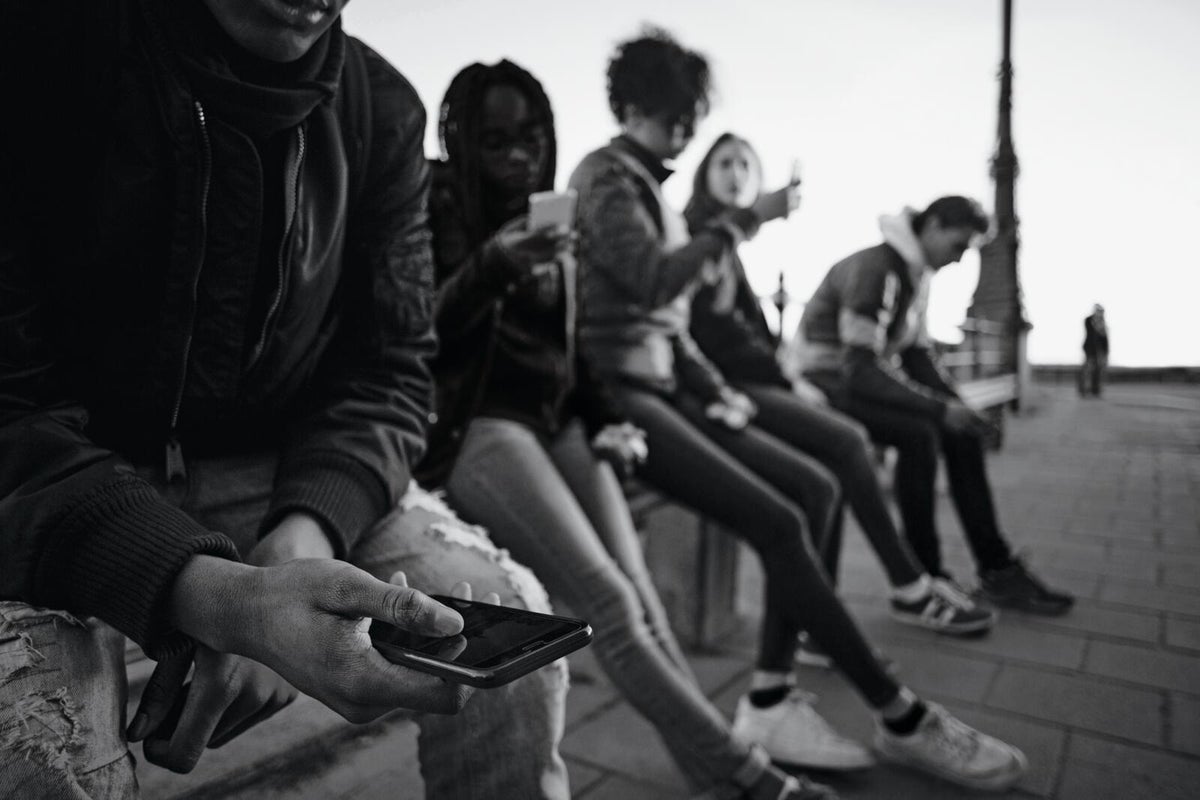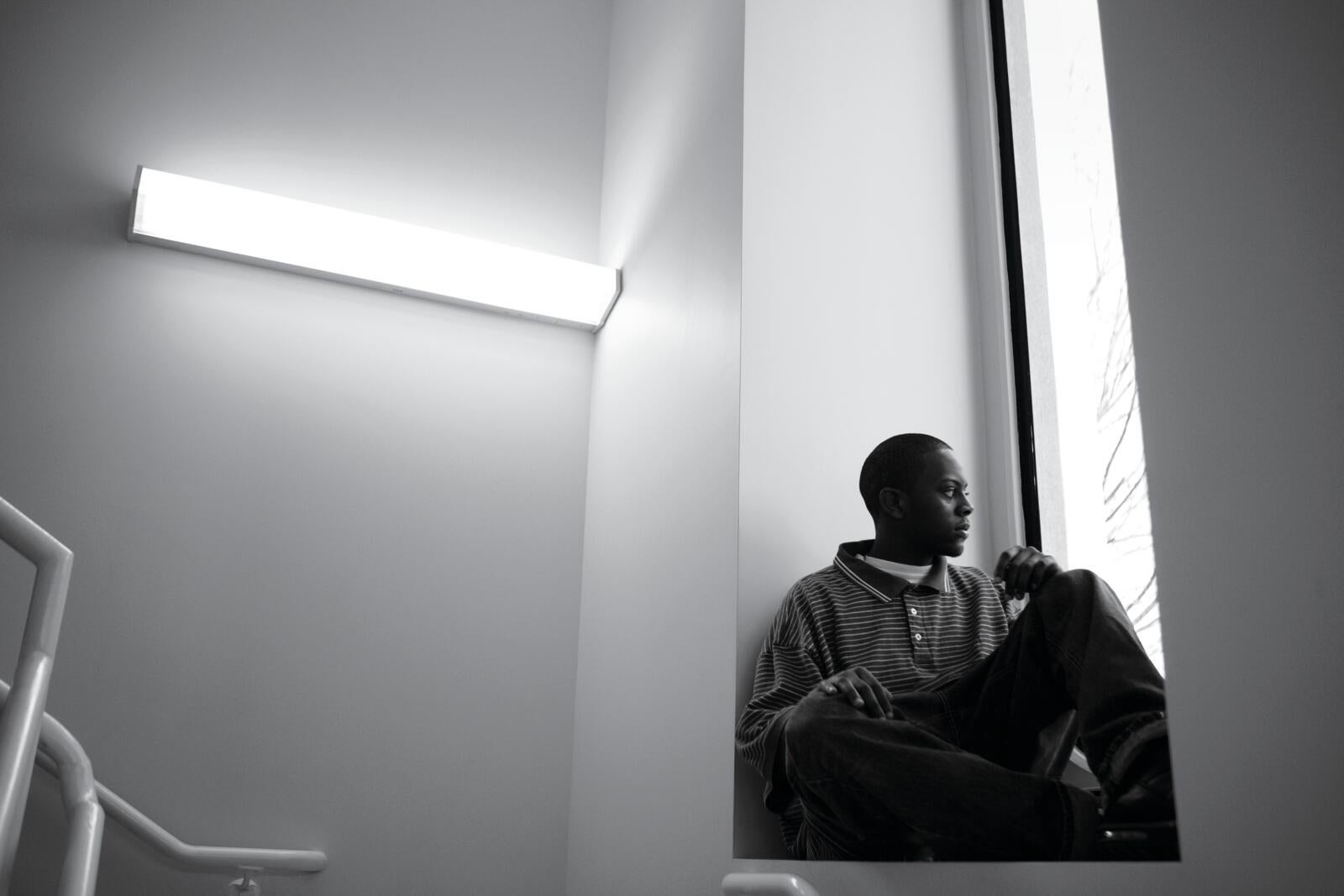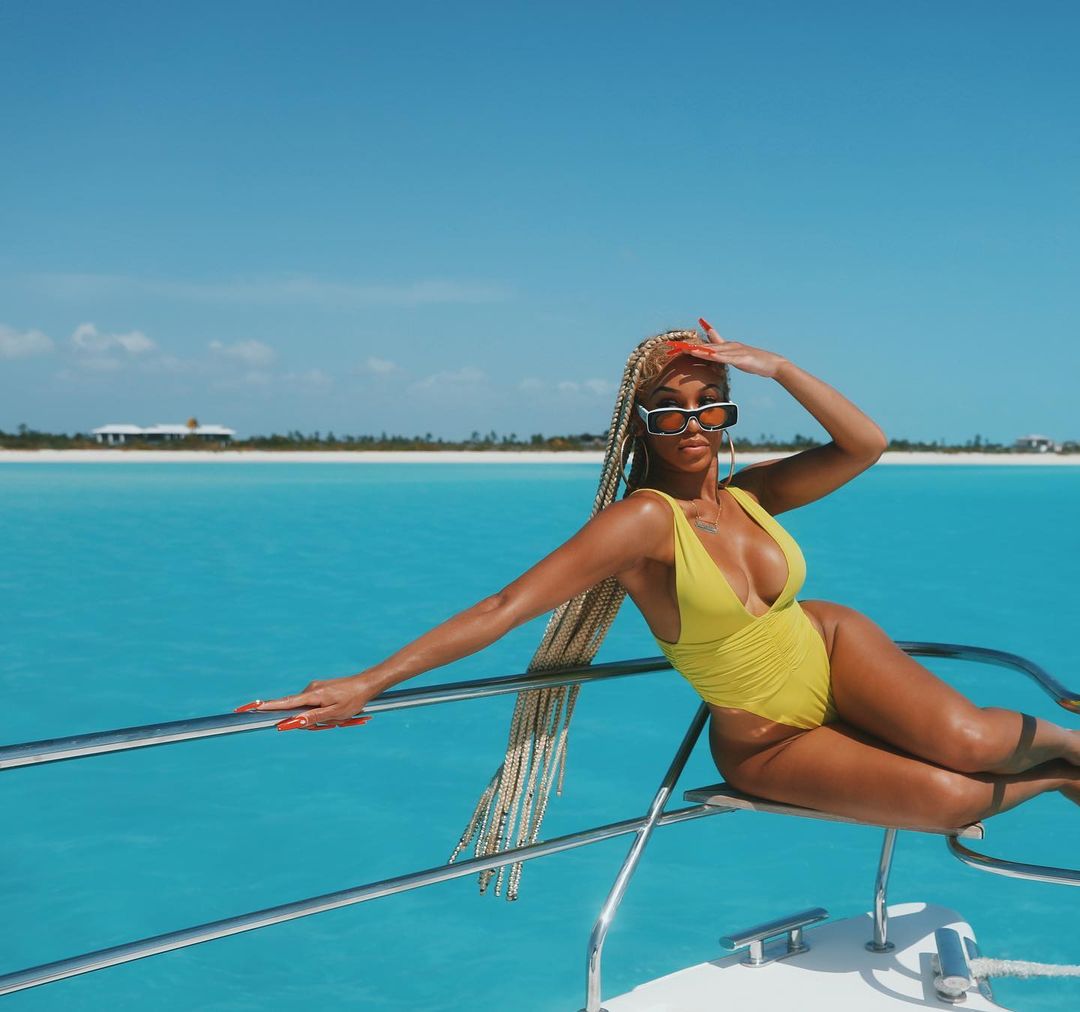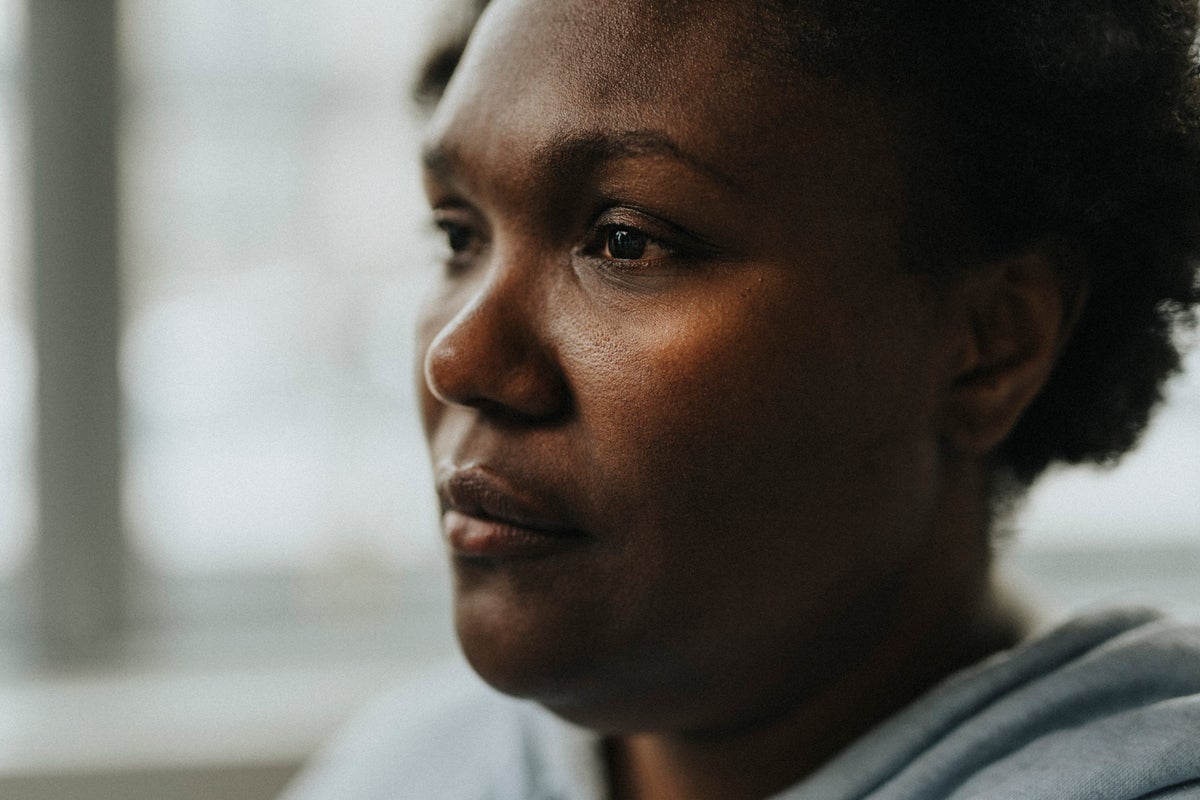

This story is featured in the May/June issue of ESSENCE.
Jamal Clay was the type of child who always wanted to help people. He was an intuitive soul, and his mother, Rafiah Maxie of Chicago, dubbed him her “right hand.” Jamal would often wake his mom up early so he could be dropped off at school before the morning bell rang, in order to assist teachers in setting up their classrooms. At home, he helped Maxie tend to his younger sister. “I think a lot of times he thought we were both parents,” she recalls. “He was very responsible.” He was also struggling with his mental health—and had been for years.
On May 27, 2020, Jamal took his life in their family home. He was 19 years old. His sister found him hanging in the garage. He used the same karate belt he’d utilized for a suicide attempt when he was 12. At that time, Maxie and medical professionals attributed Jamal’s mental state and low self-esteem to his being bullied, and he was diagnosed with single-episode depression.
Attempts at continued treatment with therapy fell through, with Jamal’s providers failing to make agreed-upon home visits, retiring, or not following up with him or Maxie. “There was definitely a stream of events that failed us,” Maxie says. “We were left to deal with it on our own and to find a way to work through it, when we really didn’t have the resources or ability.”

When the pandemic began, Maxie believes, months of isolation due to quarantines pushed her son into a dark place. She also thinks George Floyd’s murder, which occurred two days before Jamal’s suicide, triggered psychological trauma. “And then, social media is an influencer in itself,” Maxie says. “It can almost take your whole self-esteem and tear it into pieces.”
In recent years, social media has been a dominant force for youth ages 13 to 17, who split their time between Facebook, Instagram, YouTube, Snapchat and TikTok, according to data from the Pew Research Center. The latter is currently the most-used app by teens, with an average of 105 minutes spent on the platform daily. Studies conducted in 2018 revealed that 95 percent of teens had access to a smartphone, and 45 percent admitted they were online almost constantly. Research has pointed to the negative impact that viewing race-related traumatic events online can have on the mental health of adolescents of color. Social media has also been found to be particularly harmful for youth susceptible to or suffering from mental disorders. Maxie believes it had a negative impact on her son. Because of it, “I don’t think he was able to say, ‘I’m okay. Things are going to be okay. Life is going to be all right,’” Maxie says.
An Ongoing Crisis
Kamala Uzzell, Ph.D., a psychotherapist based in Durham, North Carolina, started her practice in 2009 with a goal of normalizing counseling for people of color. “If patients see a therapist who looks like them, they may think, It must be okay to go to therapy if there is a Black therapist,” Uzzell says. “Even before I opened the practice, I had heard the common belief that African-Americans don’t go to therapy. We go to church and pray about it. Or we’re in denial and say, ‘That’s not really happening.’”
Maya Williams, a 26-year-old nonbinary person from Portland, Maine, grew up dealing with the consequences of that denial. “My family would talk about mental health, and the conversation would shift to ‘growing pains’—or ‘God doesn’t give you any more than you can handle’ and ‘Are you sure you’re praying hard enough?’” she says. “Prayer has helped Black people for years, but at the same time, it’s like telling us, ‘Talk to God about it so you don’t have to talk to me about it.’ I didn’t feel comfortable talking to my parents and unpacking that until I got older.”
Maya saw a school therapist for a year in eighth grade—around the same time she expressed suicidal thoughts to her mother, and two years before a suicide attempt at 15. Her family didn’t know she had tried to take her life until she was 19 and published an essay about her experience.
According to the American Psychological Association, African-American teenage girls surpass their White and Hispanic counterparts in suicide attempts. Additionally, deaths by suicide among African-American adolescent girls rose 182 percent between 2001 and 2017. Some organizations, such as the National Alliance on Mental Illness, in California, point to untreated mental health conditions as one possible cause for the increase. At age 5, the year her parents divorced, Maya started exhibiting signs of dermatillomania, which is the repeated urge to pick one’s skin—sometimes related to obsessive-compulsive disorder. Yet she wasn’t diagnosed with the condition until she was 19, at the same time she was diagnosed with anxiety. And she didn’t start medication to treat either of her diagnoses until July 2020. “I’ve struggled with mental health issues for a really long time, but now there are new sets of anxieties to process,” she says. “So I wanted to try medication, to feel the way I want to feel.”

A Parent’s Nightmare
While rates of mental illness in African-Americans are similar to those of the general population, only one in three Blacks who need mental health care receives it, according to the American Psychiatric Association.
“There are a lot of different resources that did not exist three or four years ago,” says Tia Dole, Ph.D., executive director of the Steve Fund, an organization that supports the mental health of young people of color. “It takes some persistence, and parents too often wait for the child to be in an actual crisis. You might see their withdrawal over a period of months, and then all of a sudden you see a self-injury. The sooner you get in, the sooner they get better.”
For parents whose children are 18 or older, getting them treatment may be a Herculean task. Such was the case with Atlanta resident Bridget Gipson, whose son, Steven A. Gipson, a graduate of the University of Pennsylvania, was diagnosed with schizoaffective disorder in 2015. He had started exhibiting manic behavior before his diagnosis, and his mother sought professional help. But given that Steven was an adult, she needed his cooperation. In September 2014, he left Atlanta and became uncommunicative with her. She filed a missing person’s report; he was found days later in Miami Beach and taken to a hospital in the area.
“The doctor told me, ‘Your son is here, and we’re going to release him,’” she says. “I begged the hospital to put him in a facility where he could get additional help. They wouldn’t.” But when Gipson drove to Florida to pick Steven up, the hospital wouldn’t release him to her. “I was devastated,” she says. “They released him back onto the streets of Miami. He went missing again for almost three months.”
Steven returned to Atlanta with his mother that December. After being hospitalized, he started taking medication, attended therapy sessions and lived in a condo close to Gipson’s home. She even managed to get guardianship of Steven in early 2015, but with restrictions. She couldn’t admit him to a hospital unless he was a danger to himself, and she couldn’t force him to take his medication—which, in February 2015, he stopped taking. A month later, on March 19, 2015, Steven died by suicide. He was 26.
Changing the Dialogue
People of color are now more openly discussing mental health and its associated challenges, but many parents still don’t understand the underlying reasons for their child’s struggles. “I see a lot of guilt in parents of color,” Dole says. “They think, If my child is depressed, self-injuring or engaging in dangerous behavior, somehow I caused it. If my child receives help, then I will be shamed and blamed for their mental illness.”
But parents, she notes, need to get past this kind of thinking. “The root causes of mental illness in children and young adults can stem from a myriad of factors, from environmental to genetic,” she points out. And because every child is unique, with a different set of circumstances, signs that they may be struggling present differently. The best thing for parents to do is talk, listen, pay careful attention and be open to learning.
“Because therapy wasn’t as accessible or acceptable in the African-
American community, there are lots of parents and grandparents who don’t believe in their pain,” Uzzell says. “One in four people will experience some type of mental health challenge. It may not be a long-term condition, it may be short term, but one person in four is going to experience it. That means it’s normal to go through mental and emotional distress, and we need to normalize talking to someone about it.”
These resources help raise awareness and offer support to young people
- The Steve Fund has created a special keyword, STEVE, that young POC can text to 741741 to connect with a trained crisis counselor.
- Soul Survivors of Chicago, founded by Rafiah Maxie, donates the shoes of loved ones who have died to organizations and individuals in need—and provides educational workshops on the importance of mental health assessments.
Chloe Castleberry is a writer and editor based in New York. Her work has appeared in The Daily Mail, New York Magazine, Better Homes & Gardens and SheKnows.
*Photos used for illustrative purposes only







